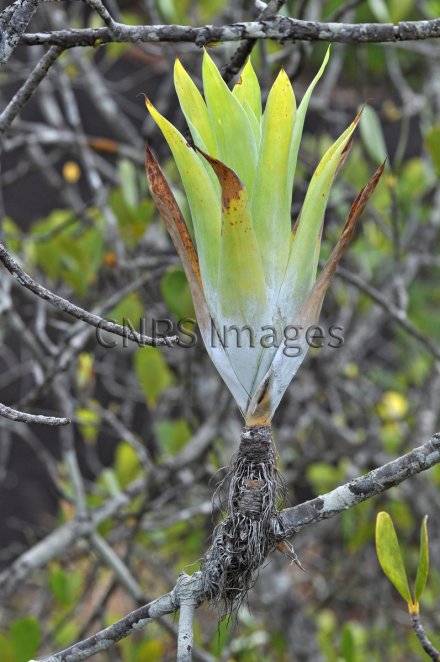Production year
2009

© Claude DELHAYE/CNRS Images
20090001_1549
"Catopsis berteroniana", la lanterne de la jungle ("Bromeliaceae"). Cette broméliacée épiphyte carnivore capture les insectes qui glissent sur la surface cireuse des feuilles. Ceux-ci tombent dans le réservoir d'eau formé au centre des feuilles et se décomposent pour fournir de l'azote à la plante. Des insectes aquatiques, des vers, et divers microorganismes aquatiques vivent dans le réservoir, participant à la décomposition des cadavres d'insectes terrestres capturés. Station des Nouragues (Inselberg), Guyane.
The use of media visible on the CNRS Images Platform can be granted on request. Any reproduction or representation is forbidden without prior authorization from CNRS Images (except for resources under Creative Commons license).
No modification of an image may be made without the prior consent of CNRS Images.
No use of an image for advertising purposes or distribution to a third party may be made without the prior agreement of CNRS Images.
For more information, please consult our general conditions
2009
Our work is guided by the way scientists question the world around them and we translate their research into images to help people to understand the world better and to awaken their curiosity and wonderment.